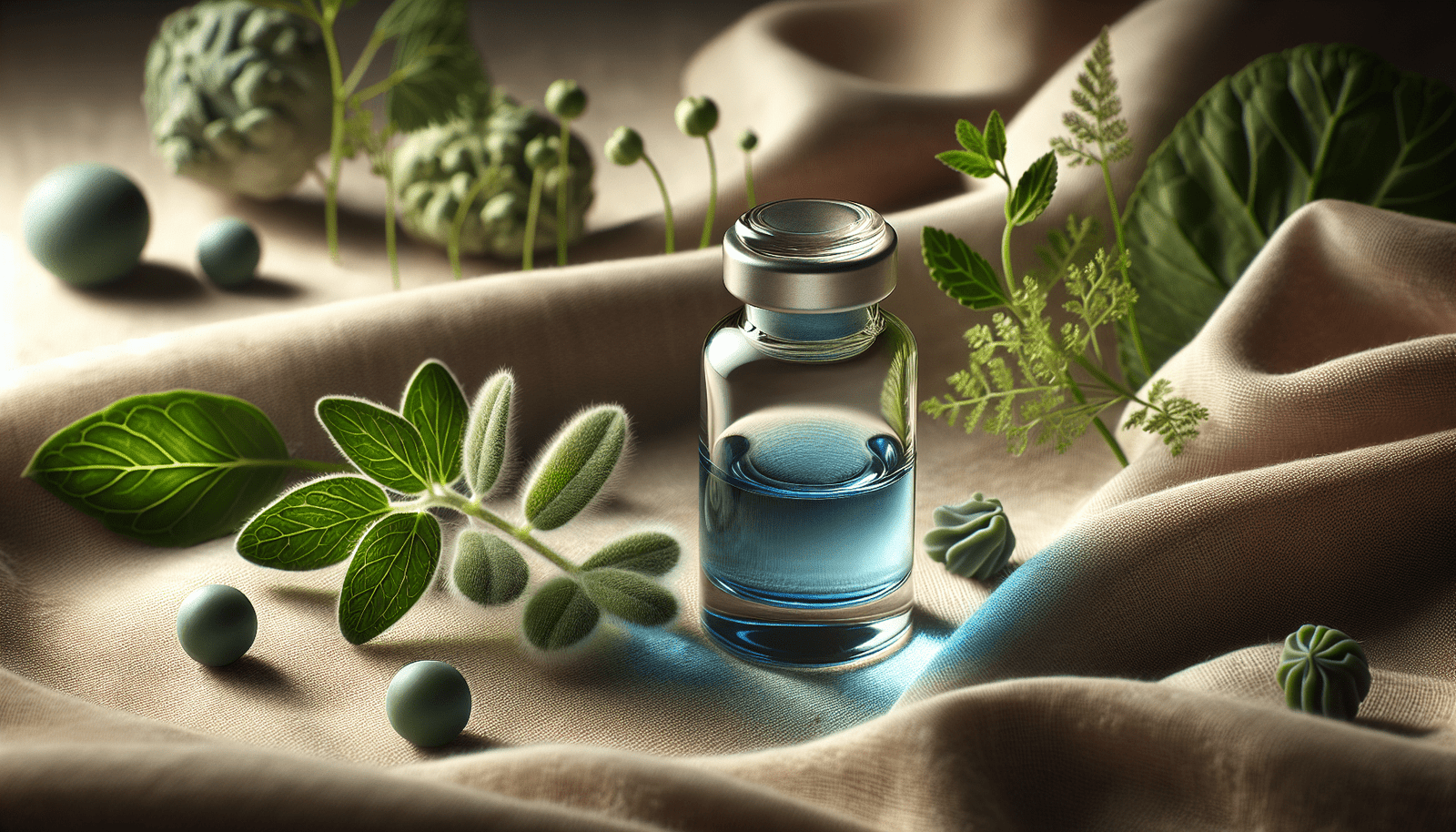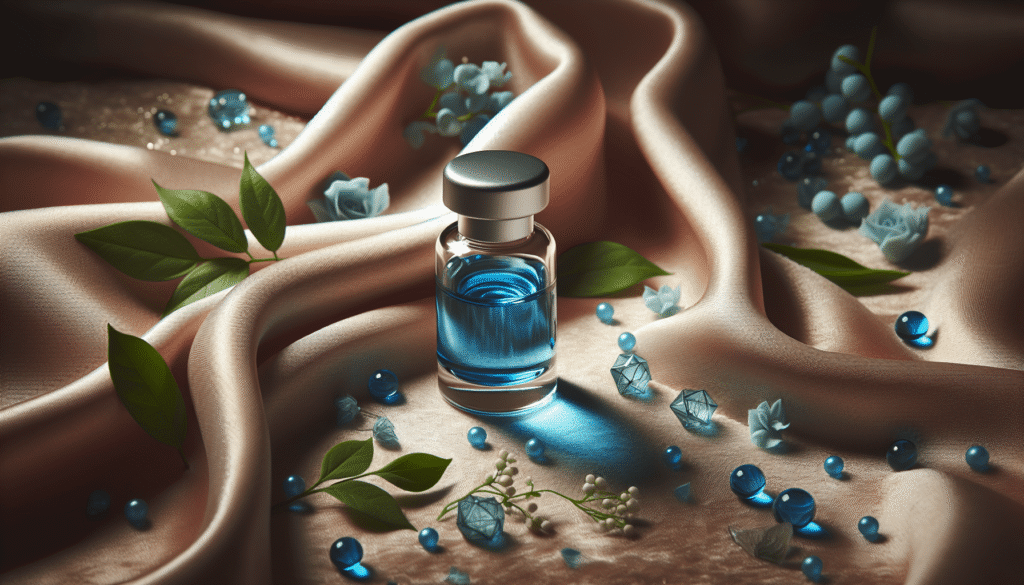
Have you ever wondered how certain compounds can transform skin health and delay the aging process? Methylene Blue may not be the first name that comes to mind, but emerging research highlights its significant potential in skin care.
Understanding Methylene Blue
Methylene Blue is a synthetic dye which has been widely used in various scientific fields, including biology and medicine. Originally developed in the late 19th century as a dye for textiles, it has since been utilized in microbiology, and even psychiatry, due to its therapeutic properties. One of the most intriguing applications of Methylene Blue is its potential role in skin health and anti-aging.
History and Scientific Background
The compound was first synthesized in 1876 by Heinrich Caro. It quickly became essential in various laboratory settings, primarily for identifying biological specimens due to its affinity for certain cells. However, the interest in Methylene Blue expanded beyond academic laboratories when researchers began exploring its effects on human health.
Mechanism of Action
Methylene Blue works primarily through its action as a mitochondrial enhancer, increasing cellular respiration and thereby promoting ATP production. This increased energy may lead to enhanced cellular functions, including healing and regeneration, which are particularly relevant in skin care. Furthermore, Methylene Blue exhibits antioxidant properties, enabling it to combat oxidative stress—a key player in skin aging.
Methylene Blue and Skin Health
The skin is a complex organ that continually undergoes regeneration. This process can become less efficient as one ages. Methylene Blue shows promise as a rejuvenating agent that may enhance skin health in several ways.
Antioxidant Properties
Methylene Blue possesses strong antioxidant capabilities. It neutralizes free radicals—unstable molecules that can cause oxidative stress, leading to premature aging. By reducing oxidative stress, Methylene Blue may protect skin cells from damage, contributing to a more youthful appearance.
Table 1: Comparison of Antioxidants
| Antioxidant | Mechanism of Action | Benefits to Skin |
|---|---|---|
| Methylene Blue | Neutralizes free radicals | Reduces aging signs |
| Vitamin C | Collagen synthesis | Brightens and firms skin |
| Retinol | Increases cell turnover | Smoothens texture |
Anti-Inflammatory Effects
Inflammation plays a significant role in various skin conditions, including acne, eczema, and psoriasis. Methylene Blue’s anti-inflammatory mechanisms may reduce redness and swelling associated with these conditions, promoting clearer and healthier skin. Its ability to modulate inflammatory pathways offers a promising avenue for those seeking relief from chronic skin issues.

Role in Anti-Aging
The desire to maintain youthful skin is universal. As you age, the skin naturally loses elasticity and volume, leading to visible signs of aging such as wrinkles and sagging. Methylene Blue holds promise in counteracting these effects.
Cellular Regeneration
One of the primary benefits of Methylene Blue is its ability to promote cellular regeneration. It stimulates the production of ATP, which is crucial for cell survival and function. Enhanced cellular energy can lead to faster regeneration of skin cells, brightening your complexion and improving texture.
Collagen Production
Collagen is the primary structural protein in the skin, providing elasticity and firmness. Research suggests that Methylene Blue may aid in boosting collagen production. An increase in collagen levels can result in tightened skin, reduced fine lines, and improved overall appearance.
Potential Role in Photoprotection
Methylene Blue may also provide some degree of photoprotection against ultraviolet (UV) radiation. UV rays can accelerate the aging process by promoting the breakdown of collagen and increasing oxidative stress. By acting as a photoprotectant, Methylene Blue may help shield the skin from sun-induced damage.
Application Methods
If you are considering adding Methylene Blue to your skincare regimen, understanding the various application methods is crucial.
Topical Formulations
Topical applications of Methylene Blue have gained popularity. Various skincare products now incorporate this compound to deliver its benefits directly to the skin. Creams, serums, and gels featuring Methylene Blue can facilitate targeted treatment.
Concentration and Safety
It is important to note that the concentration of Methylene Blue influences its efficacy and safety. Many formulations contain safe concentrations, but it is advisable to perform a patch test before full application. Understanding how your skin reacts to any product is essential.

Considerations and Precautions
While Methylene Blue shows considerable promise for skin health and anti-aging, it is not without potential side effects.
Skin Sensitivity
Some individuals may experience skin sensitivity or allergic reactions when using Methylene Blue. Symptoms may include redness, itching, or a burning sensation. Monitoring your skin’s response and discontinuing use if adverse reactions occur is vital.
Interaction with Other Ingredients
When incorporating Methylene Blue into a skincare routine, be cautious about combining it with other active ingredients—particularly retinoids, acids, and vitamin C. Such combinations may lead to irritation or diminish the effectiveness of one or both components.
Future Research Directions
As the body of research surrounding Methylene Blue grows, so does the understanding of its intricate role in skin health and anti-aging.
Clinical Trials
Current studies exploring the use of Methylene Blue in dermatology are limited, but emerging clinical trials may offer valuable insights into its long-term benefits and optimal usage. Keeping an eye on new findings can be instrumental in harnessing its full potential.
Expanding Applications
Researchers are investigating additional applications for Methylene Blue beyond skincare. Its roles in wound healing, various skin disorders, and even potential uses in aesthetic procedures are areas of vibrant inquiry.
Integrating Methylene Blue Into Your Regimen
Should you consider integrating Methylene Blue into your skincare routine? The following steps may help guide your decision.
Consultation with Skincare Professionals
Engaging with a dermatologist or skincare professional can provide personalized insights. They can help you assess your skin type, existing regimen, and the appropriateness of Methylene Blue for your needs.
Patch Testing
Before fully incorporating any new product, perform a patch test. Apply a small amount of the Methylene Blue formulation to a discreet area of skin. Monitor for 24-48 hours to ensure no adverse reactions occur.
Gradual Introduction
If you decide to add Methylene Blue to your routine, do so gradually. Start with lower concentrations and increase usage based on your skin’s response. This approach minimizes the risk of irritation while allowing you to gauge effectiveness.
Conclusion
Methylene Blue offers exciting possibilities for skin health and anti-aging. Its antioxidant properties, anti-inflammatory effects, capacity to promote cellular regeneration, and potential role in collagen production position it as a noteworthy contender in skincare.
As research continues to unveil the multifaceted benefits of Methylene Blue, it is essential to approach its use with informed caution. By paying attention to your skin’s unique needs and actively monitoring its response, you can navigate the integration of this compound into your regimen effectively. Understanding that effective skincare is a journey of learning and adapting will ultimately lead to healthier and more youthful skin.
There is much still to learn about Methylene Blue, but its promise in skincare represents a potential pathway towards not just cosmetic alterations but holistic skin health. Keep an eye on future developments, as the landscape of skincare continues to evolve with innovative and scientifically-backed solutions.